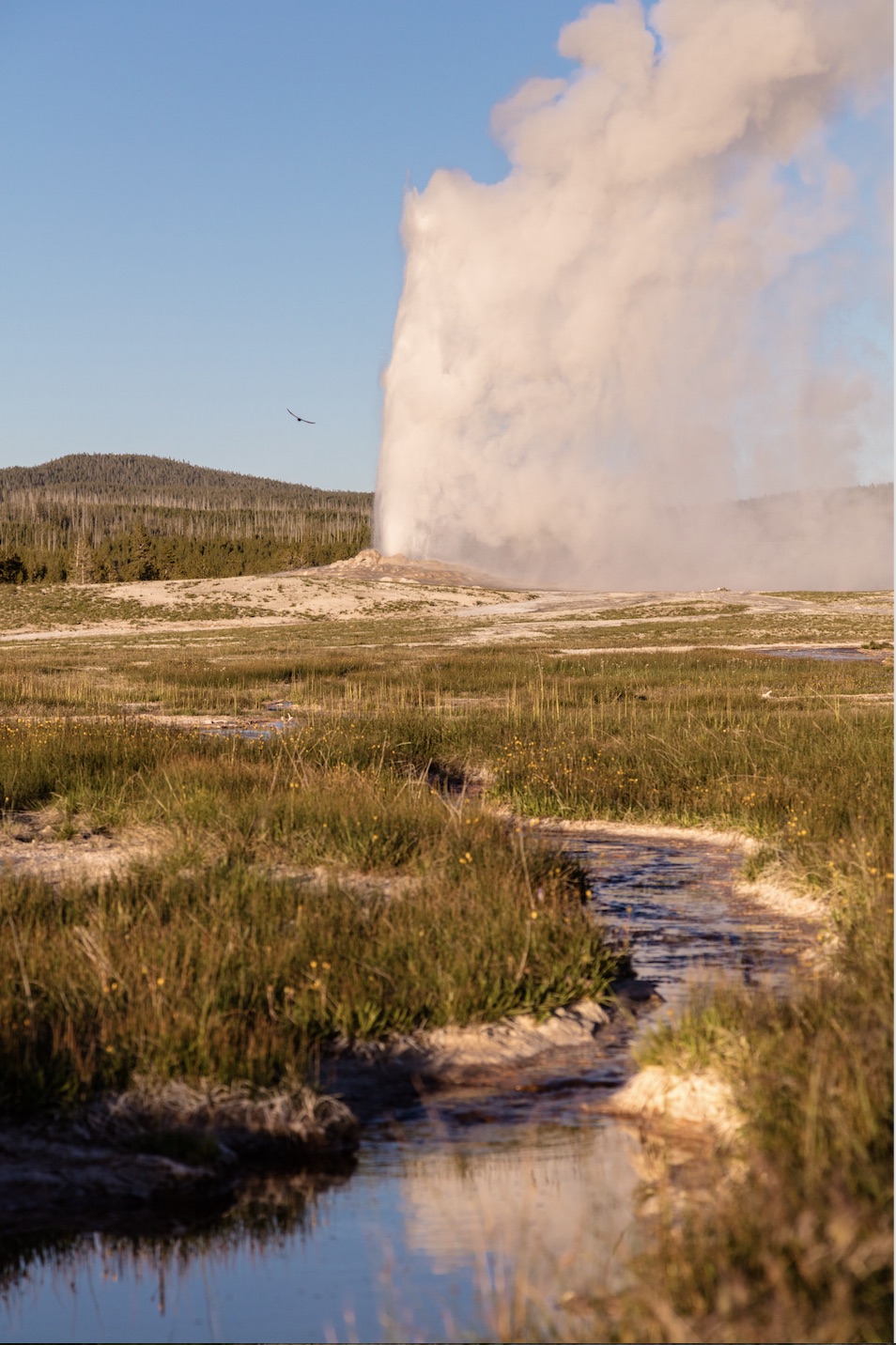By Todd Wilkinson EBS ENVIRONMENTAL COLUMNIST
One of the greatest rustic hotels in the world—and, more recently, a new, multi-million-dollar visitor center—were built practically on top of the world’s most famous and, so far predictable, erupting geyser.
That America still has the Earth’s largest assemblage of still-functioning geothermal phenomena in Yellowstone National Park is nothing short of a miracle.
It’s a cautionary message that is loud and clear in an overview provided by graduate student Alethea Steingisser and professor Andrew Marcus, both geographers from the University of Oregon. Their report, titled “Human Impacts on Geyser Basins,” appeared in the winter 2009 edition of the journal “Yellowstone Science.”
“Globally, there are at least 40 locations where geyser activity has been documented but geysers are now extinct in many of those locations,” they wrote.
In New Zealand, which once had the third largest number of geysers, some 220 spread across 20 different geothermal areas, now has only 55. The bulk of the decline is linked to poorly conceived energy development.
Closer to home, at Beowawe and Steamboat Springs in Nevada, the two largest geyser basins in the U.S. outside of Yellowstone, zero active geysers exist today following the drilling of exploratory hydrothermal energy wells four decades ago.
As calls are made for America to harness alternative energy resources, the Greater Yellowstone Ecosystem is becoming a stage again for pondering the tradeoffs of development versus protection. Similar discussions are happening in Russia’s Valley of the Geysers on the Kamchatka Peninsula.
Although Yellowstone National Park was set aside, in large part, to safeguard its geysers and 10,000 other geothermal phenomena, human regard for the features historically has been less than admirable.
Earlier iterations of modern tourists chiseled off pieces of geyser cones and carved their initials and graffiti into the mineralized surfaces. Hucksters dumped objects—all kinds—into the waters to leave them encrusted with travertine so that trinkets could be peddled to visitors as souvenirs.
Tour groups were encouraged to pack as much stuff into geyser vents as possible, as if they were preparing cannon fodder, only to sit back waiting for an eruption to send the junk skyward.
When park staff learned that some guides were pouring soap and lye into geysers to trigger premature eruptions, they, too, engaged in the practice. Even famed park photographer F. Jay Haynes employed the technique so that geysers would fountain on cue when he thought the light and wind were perfect to create a postcard image.

In short, adults treated the delicate, fragile features in the national park as cheap carnival games for their own immediate enjoyment, never thinking twice about long-term impacts because, frankly, many knew they might never return to Yellowstone again.
Steingisser and Marcus note that park geysers and hot pools sustained heavy damage in 1946 as the end of World War II brought huge increases in visitation. And, as late as the 1950s, rangers dubbed the picturesque, rainbow-hued waters of Morning Glory Pool as “the garbage can” because of the amount of debris tossed into it.
Looking back, such behavior seems senseless and stupid, yet when the park implemented strict resource protection rules, informed by science, there were still profiteers who cackled loudly about their livelihoods being affected, their freedoms being impinged upon and years of beloved, sacred tradition being dishonored by the heavy-handed, paternalistic federal government.
The irrefutable lesson is that whenever natural resource protection or development is left to the whims of the lowest common denominator of human instincts, it suffers.
People who are unable to restrain their base impulses nearly annihilated most of the wildlife in the West a little more than a century ago, left many streams contaminated by abandoned mining and liquidated forests for the trees.
We forget that the U.S. Forest Service, and the establishment of the forestland reserve concept in Greater Yellowstone, was the result of unspeakable toppling of timber and fouling of watersheds in the East.
As Steingisser and Marcus conclude in their analysis on Yellowstone’s geyser basins, over half of all the major geothermal areas in the world have been harmed and many thermal features lost. The surviving ones will become even scarcer as pushes are made to develop geothermal energy and as a growing population, realizing how rare they are, clamber to see them.
A version of this article first appeared on Jan. 12, 2018 on explorebigsky.com.
Todd Wilkinson is the founder of Bozeman-based “Mountain Journal” (mountainjournal.org) and is a correspondent for “National Geographic.” He’s also the author of “Grizzlies of Pilgrim Creek” about famous Jackson Hole grizzly bear 399, which is available at mangelsen.com/grizzly.














